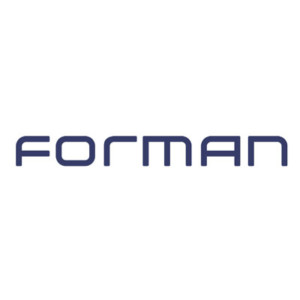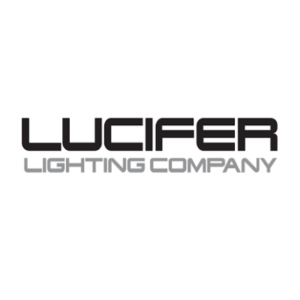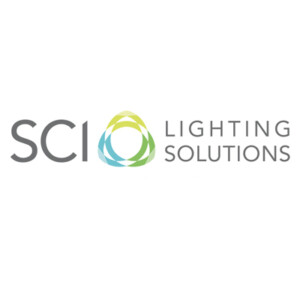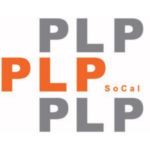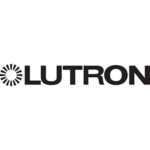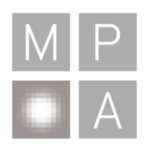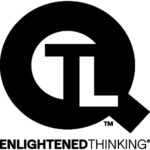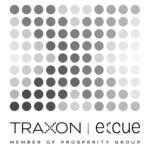2024 Russell Cole Memorial Lighting Design Competition
Refined Mexican Seafood Restaurant
PROJECT DESCRIPTION
We are thrilled to work with you, as we bring to life our vision for a remarkable Mexican seafood restaurant nestled in the heart of Frogtown, Los Angeles. Our goal is to capture the essence of a laid-back Mexican beach town, infusing it with an elevated and elegant dining experience that resonates with our patrons. Our locally sourced culinary offerings, ranging from delectable ceviche, tantalizing seafood towers, and the freshest fish, are designed to transport our guests to a coastal haven of flavors and sensations.
Design Philosophy: We aim to craft an ambiance that authentically reflects the soul of a Mexican beach town, while also embodying a sense of sophistication and refinement. The interplay between exceptional gastronomy and captivating aesthetics is central to our vision, and we believe that the lighting design plays a pivotal role in achieving this harmony.
Dining 1 - Graced by a beautifully curated wall of mezcals at the entrance, this space will feature an inviting lounge/bar area, a communal table for shared experiences, and sumptuous booth/banquette seating. Our desire is for this space to emanate an atmosphere of refined relaxation, fostering camaraderie and community among our patrons.
Dining 2 - Dedicated to our ceviche and raw bar. We see this space as a theater for culinary artistry, where the meticulous preparation of each ingredient takes center stage. We aim to immerse diners in an ambiance reminiscent of the enchanting Mexican seaside, igniting their senses and creating an unforgettable dining spectacle.
Dining 3 - With three private booths and thoughtfully arranged tables, this area seamlessly transforms into a private party room. Our aspiration is for this space to exude an elevated refinement, perfect for intimate gatherings, while also possessing the dynamic energy to host festive celebrations.
Patio Seating / Building Façade - We wish to capture the enchantment of a restaurant situated on the Mexican coast overlooking the seaside. We see the lighting being pivotal in narrating the story of our restaurant, from the very moment our guests arrive.
Focal Points that encapsulate the essence of our restaurant include; the raw seafood and ceviche bar, the mezcal/drink bar, the captivating entry/mezcal wall, and the versatile private party enclave in Dining 3
Scope of Work: Your scope of work is the lighting and controls for the spaces that we've described above. The back-of-house spaces and kitchens are explicitly excluded from this scope.
PDF Downloads
CONCEPTUAL VS. ADVANCED ENTRIES QUICK REFERENCE
Entries will be divided into two categories: Conceptual and Advanced.
Both categories are assigned the same challenge project.
Each category has its own set of entry requirements for the design presentation.
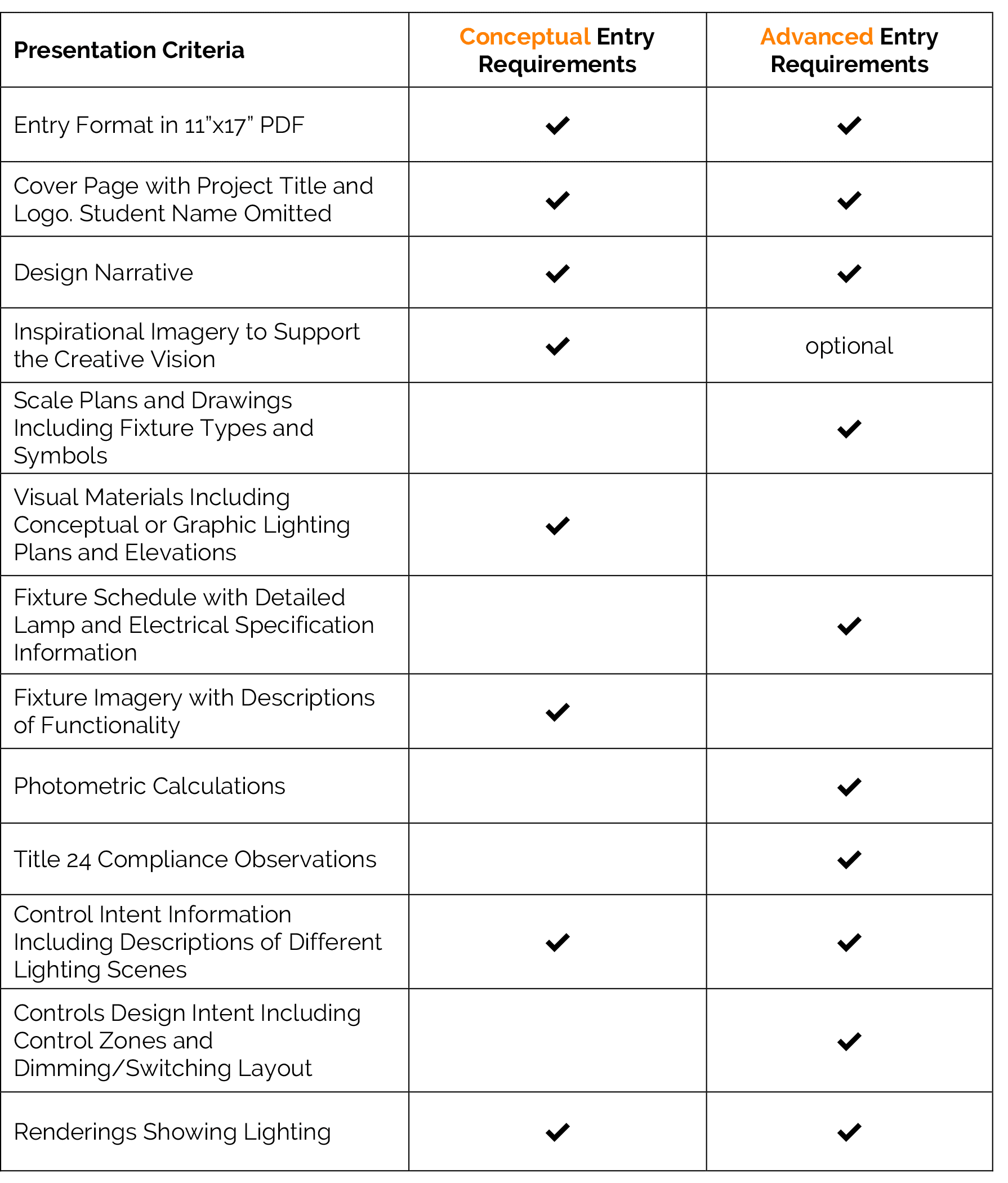
PRESENTATION CRITERIA FOR CONCEPTUAL ENTRIES
Each student must submit electronically in PDF Format:
- 11”x17” .PDF Format Lighting Concept Design Package
- Name your file with the project title shown on your cover page
- DO NOT include your own name or school information in the file name on any page of the .PDF
- There is no limit on the quantity of pages. (Entries in the past have averaged around 10-12 pages)
- Entry must be submitted as one complete file.
You Must include:
- Cover Page with Project Title & Logo
- Chose a unique project title that ties into your design concept. This is how we will identify your project during judging.
- Design Narrative, a written description of your design inspiration and development, include the following: (Narrative text can be dispersed throughout your presentation.)
- The creative vision for the lighting design, including inspiration and how that vision will be effectively realized with your design choices
- Lighting Fixture selections
- Lighting Techniques (grazing vs. washing, etc.)
- An explanation of any proposed changes to the architecture or finishes shown on the provided plans. Please ensure all changes are motivated by lighting needs not your personal preferences. (example: adding a cove to conceal indirect lighting) Hint: Imagine you were presenting the design to your client in-person, what would you say to them? Include all of that information and description in the narrative. Use the narrative text to guide the judges though your design. Remember, the judges will only know what you tell them in the presentation.
- Visual Materials (conceptual level)
- Inspirational imagery supporting your creative vision.
- Graphic Plans showing Lighting Locations
- Graphic Reflected Ceiling Plans with Lighting Locations
- Lighting Fixture Imagery with Descriptions
- Include one Image of each Lighting Fixture Type
- Description of Fixture – Include physical description of light, the color of light (example: warm or cool) and quality of the light (example: flood or spot / hard or soft)
- Description of Purpose – what purpose does the light serve in the design (example: general wash light or accent spotlight for artwork)
- Control Intent
- Dimming/control intent with description of different lighting scenes. (For example: How will it look day vs. night)
- Renderings / Graphical Representation of design intent – could be
- Computer Renderings (Drawings, AGI, Photoshop, 3D Studio, etc)
- Scanned Hand sketches
- Consider your Control Intent when developing your imagery
- All Architectural assumptions – Any changes to the architecture must be justified.
- Sections
- Elevations
- Scanned Hand sketches detailing lighting effect or details
- Details
REMINDER: DO NOT PUT YOUR NAME OR SCHOOL INFORMATION ANYWHERE ON THE DESIGN BOOKLET OR FILES – THE PROJECT TITLE ON YOUR BOOKLET TITLE PAGE AND FILENAME WILL BE USED TO MATCH IT WITH YOUR ENTRANT CONTACT INFORMATION.
All entries must be submitted prior to the deadline via the IESLA website.
See the download section above for additional competition information and documentation.
Address all questions regarding the competition, presentation criteria, or design challenge to the IES LA Student Design Competition Committee at iesladesigncompetition@gmail.com
CONCEPTUAL JUDGE SCORE CARD
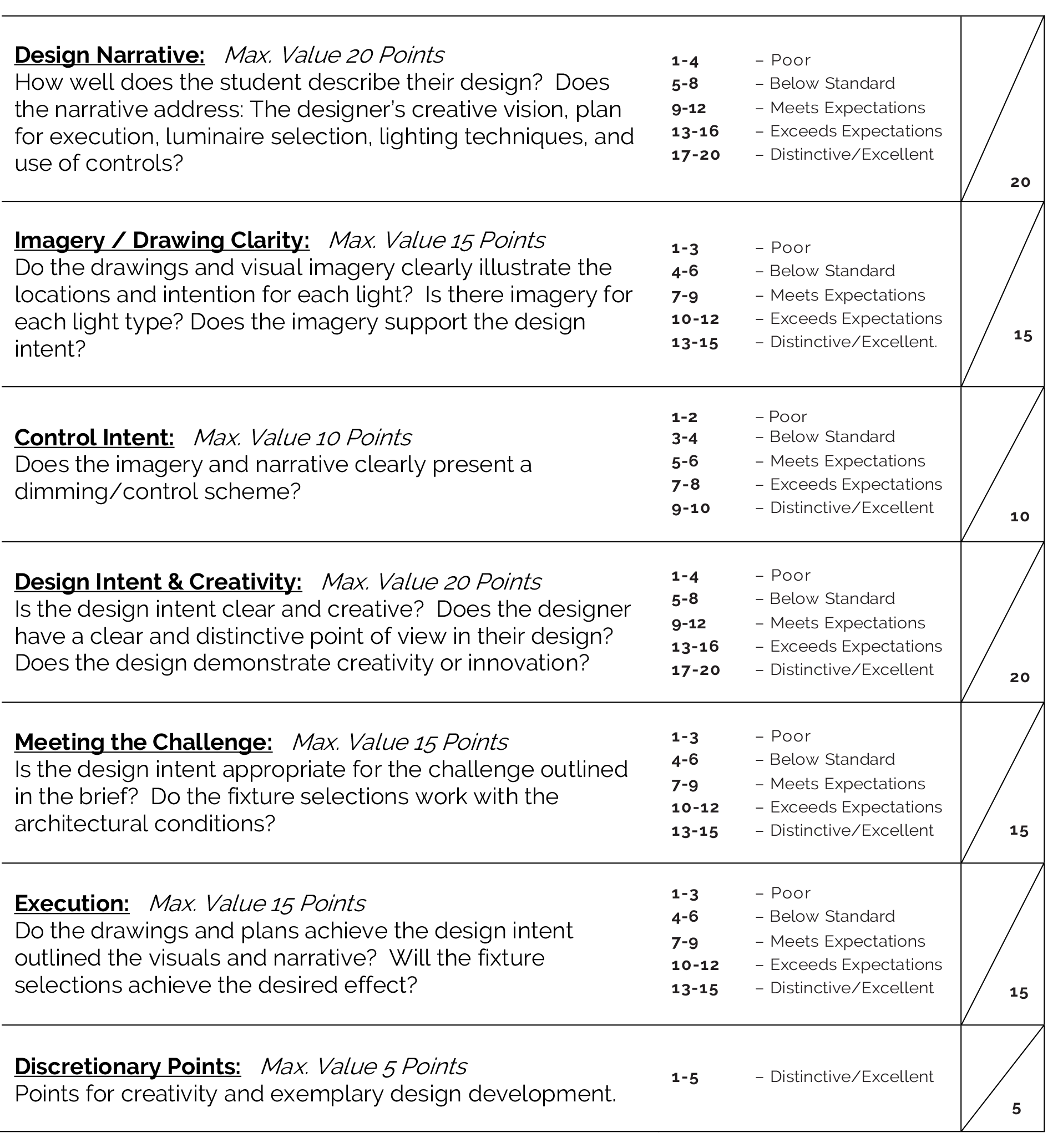
PRESENTATION CRITERIA FOR ADVANCED ENTRIES
Each student must submit electronically in PDF Format:
- 11”x17” PDF Format Lighting Design Package
- Name your file with the project title shown on your cover page
- DO NOT include your own name or school information in the file name on any page of the PDF
- There is no limit on the quantity of pages. (Entries in the past have averaged around 12-18 pages)
- Entry must be submitted as one complete file.
You Must include:
- Cover Page with Project Title & Logo
- Chose a unique project title that ties into your design concept, it is how we will identify your project during judging
- Design Narrative, a written description of your design inspiration and development, include the following: (Narrative text can be dispersed throughout your presentation.)
- The creative vision for the lighting design, including inspiration and how that vision will be effectively realized with your design choices
- Lighting Techniques (grazing vs. washing, etc.)
- Luminaire selection choices
- Light Sources (color rendition, dimming compatibility, etc.)
- Compliance (IES recommendations, standards, and codes)
- Lighting control scenes and presets with a description of how they are used.
- Notes on all Architectural assumptions or adjustments. Please explain any proposed changes to the architecture or finishes shown on the provided plans. Ensure all changes are motivated by lighting needs not your personal preferences. (example: added a cove to conceal indirect lighting)
Please Note: The design narrative is a written description of your design inspiration and development. Inspirational imagery may also be included in support, but not in place of, the written narrative.
Hint: Imagine you were presenting the design to your client in-person, what would you say to them? Include all of that information and description in the narrative. Use the narrative text to guide the judges though your design. Remember, the judges will only know what you tell them in the presentation.
- Drawings
- Plans & Reflected Ceiling Plans (Include Fixture Types & Symbols Key)
- All drawings must be to scale with the scale noted.
- Renderings/Graphical Representation of design intent
- Renderings (could use any tool any including Hand drawings, AGI, Photoshop, 3D Studio, etc)
- Consider your Control Intent when developing your imagery
- Describe your design intent and how you achieved it
- Fixture schedule Including:
- Fixture Type
- Fixture Image
- Description of Fixture – Include physical description of light, the color of light (example: warm or cool) and quality of the light (example: flood or spot / hard or soft)
- Manufacturer & Catalog Number
- Lamp/Source Information
- Relevant Notes
- Control Intent
- Photometric Calculations
- Show photometric calculations in footcandles or lux. (units must be indicated on the page)
- Describe how the achieved levels meet the needs of the spaces and the design intent.
- Control Intent
- Control Zones with explanation of how they are used
- Dimming/Switching layout
- Title 24 – 2019 Compliance Observations – Just for design intent.
- Square footage of the area
- Assumed Title 24 categorization for the areas
- Assumed Title 24 watts per square foot allowance for the areas
- Watts per square foot of the area
- Overall watts per square foot for the entire project
- Any other notes on how compliance will be achieved. (i.e. exemptions or alternate calculation methods)
- Comments on how Title 24 was taken into consideration in the development of your design. Title 24 – 2019 code documents can be found here: http://www.energy.ca.gov/title24/
- Additional Title 24 information can be found here: https://cltc.ucdavis.edu/publication/nonresidential-lighting-electrical-power-distribution-guide-2019-building-energy
- Additional information to help describe your design and ideas may also include:
- Inspirational Imagery
- Sections
- Elevations
- Scanned Hand sketches detailing lighting effect or details
- Details
REMINDER: DO NOT PUT YOUR NAME OR SCHOOL INFORMATION ANYWHERE ON THE DESIGN BOOKLET OR FILES – THE PROJECT TITLE ON YOUR BOOKLET TITLE PAGE AND FILENAME WILL BE USED TO MATCH IT WITH YOUR ENTRANT CONTACT INFORMATION.
All entries must be submitted prior to the deadline via the IESLA website.
See the download section above for additional competition information and documentation.
Address all questions regarding the competition, presentation criteria, or design challenge to the IESLA Student Design Competition Committee at iesladesigncompetition@gmail.com
ADVANCED JUDGE SCORE CARD
JUDGING CRITERIA FOR CONCEPTUAL & ADVANCED ENTRIES
Judging General
- 1. All entries will be screened to ensure comprehensive compliance with the above stated criteria – submissions not in compliance shall be disqualified.
- See the above Judging Score Card for additional judging criteria and scoring.
Preliminary Judging:
- A panel of online judges performs preliminary judging.
- Online judging is performed ‘blind.’ Meaning, online judges will only have access to the .pdf entries. Online judges will not have access to any of the applicants’ personal information (i.e. names, schools, professors, etc.).
- The students receiving the highest scores from the panel of online judges will be selected as finalists.
Finalist Judging:
- Finalists will be notified by email or text message by Tuesday, May 23rd, 2023. If a finalist does not confirm that he/she will be available to present his/her solution at the meeting on Thursday, June 1st within 12 hours of notification, the next highest scoring project will take their place.
- In order to win, finalists must appear live online to do a verbal delivery of their presentation to a panel of judges on Thursday June 1st, 2023. .
- Finalist verbal presentations consist of a 7-minute power-point presentation followed by a 3-minute question and answer session with the judges. All students and educators are invited to attend finalist presentations.
- Finalists must send the power point files they will use for their presentations to the Design Competition Committee by 5pm on Friday May 26th.
- Finalists will present their projects on Thursday June 1st; presentations will begin at 6:00 pm. Awards will be determined based upon these presentations..
- Awards shall be announced at the Lumen West banquet in June. (Date TBD) Each award winner will receive complimentary admission for themselves and one guest to the Lumen West Awards Banquet.
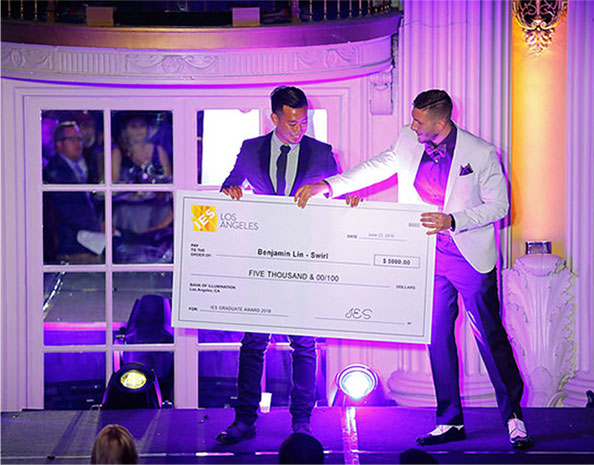 GENERAL INFORMATION
GENERAL INFORMATION
Russell Cole was a second-generation owner of Cole Lighting (C. W. Cole & Company), one of the oldest lighting companies in the U.S. Cole Lighting became a well-known in the Los Angeles area and their luminaires have been installed on iconic projects such as The Mann’s Chinese Theater, Disneyland, and the Griffith Observatory. The company has been headquartered in Los Angeles since its inception. Russell Cole, the son of founder Clarence Cole, took over ownership of the company in 1952 and ran it until the mid 1980s. Russell continued to come into the office well into his 90s. Russell was an active member of the IES and always attended events with a friendly smile and was ready to chat with everyone. Because Mr. Cole’s dedication to the lighting industry and his longevity as a member of IES, the Los Angeles Section Student Lighting Design Competition Award is named in his honor.
The Russell Cole Lighting Design Competition was established to encourage and recognize students in southern California who have shown a passion for light and its effect on architecture. These awards were established by the Illuminating Engineering Society, Los Angeles Section (IESLA). The IES is an international organization whose purpose is to promote lighting education and to develop recommended lighting practices.
Over the last 10 years the Russell Cole Memorial Lighting Design Competition has awarded more than $150,000 to more than 40 students.
GENERAL RULES AND CONDITIONS
- Entries will be divided into two categories: Conceptual and Advanced. Both categories are assigned the same challenge. But each category has its own set of entry requirements for the design presentation.
- Eligible students must select one category for their entry. Students will be evaluated based on that category’s presentation criteria and judging score sheet.
- Projects showing substantial completion of Advanced category work, but submitted as Conceptual may be moved to the Advanced category.
- Each Student may submit only one entry per year.
- Each entrant shall submit a single .pdf presentation of a lighting design solution for the supplied design challenge per the stated presentation criteria.
- All entries shall be uploaded to the IESLA website and all students must complete registration by 11:59pm on Wednesday May 8th, 2024 - a link is available above.
- Eligibility will be confirmed after projects are submitted. Professors will be contacted by the design competition committee regarding a student’s current enrollment in an eligible class.
- All judges will be Southern California design and engineering professionals.
- In order to win, finalists must appear live online to do a verbal delivery of their entry to a panel of judges on Thursday May 30, 2024.
- Awards shall be announced at the Lumen West banquet in June.
- Each award winner will be given a complimentary membership to the IES for the following year.
- The monetary awards will be paid to the student directly. It is the student’s responsibility to pay any applicable taxes and report the prize money to any applicable agencies.
- Awards will be mailed to address provided by to the students on their entry form.
- Quantities of finalists and distribution of prizes are not pre-determined and may be awarded at the competition committee and judges’ discretion to one or more students.
- Last year, $25,000.00 was distributed to the student award winners. However, awards values may vary from year to year at the discretion of the judging panel and IESLA Board of Directors.
- Regardless of “team” efforts, the awards will go only to the individual under whose name the project was submitted and only that individual will be recognized.
- Students are responsible for their own transportation to and from any events.
- Questions regarding the competition should be sent to iesladesigncompetition@gmail.com
ELIGIBILITY REQUIREMENTS
To be eligible to enter in this competition an applicant must meet the following criteria:
- Be enrolled in an accredited program at an accredited educational institution.
- Be enrolled in an approved, accredited curricula of architecture (ACSA), interior design (CIDA), architectural engineering, electrical engineering, industrial engineering (ABET) or theater (NAST).
- Be a full time undergraduate or graduate student pursuing lighting studies in the above majors or a graduate student with a specific lighting project as part of an advanced degree program.
- Be graduate of a high school or currently attending a program in the Southern California counties of Los Angeles, Orange, Ventura, San Bernardino or Riverside.
If you feel that you or your educational institution should be eligible but does not meet the above criteria, please contact the scholarship committee at iesladesigncompetition@gmail.com – exceptions will be considered on a case-by-case basis.








 Need Project Inspiration or Advice?
Check out our LiteBite Video Library!
Need Project Inspiration or Advice?
Check out our LiteBite Video Library!
